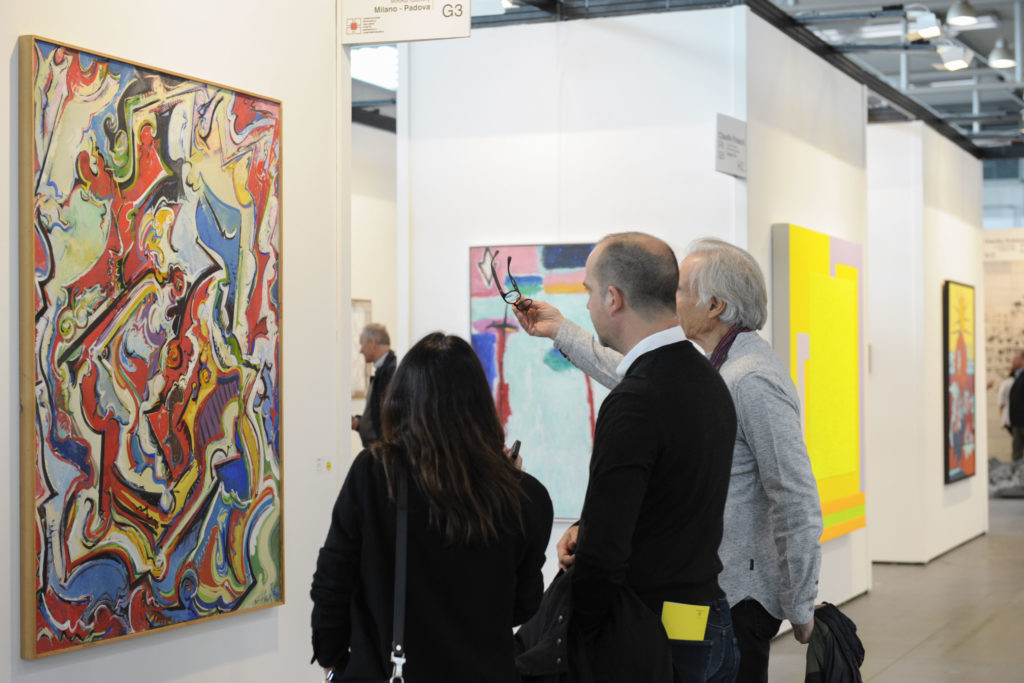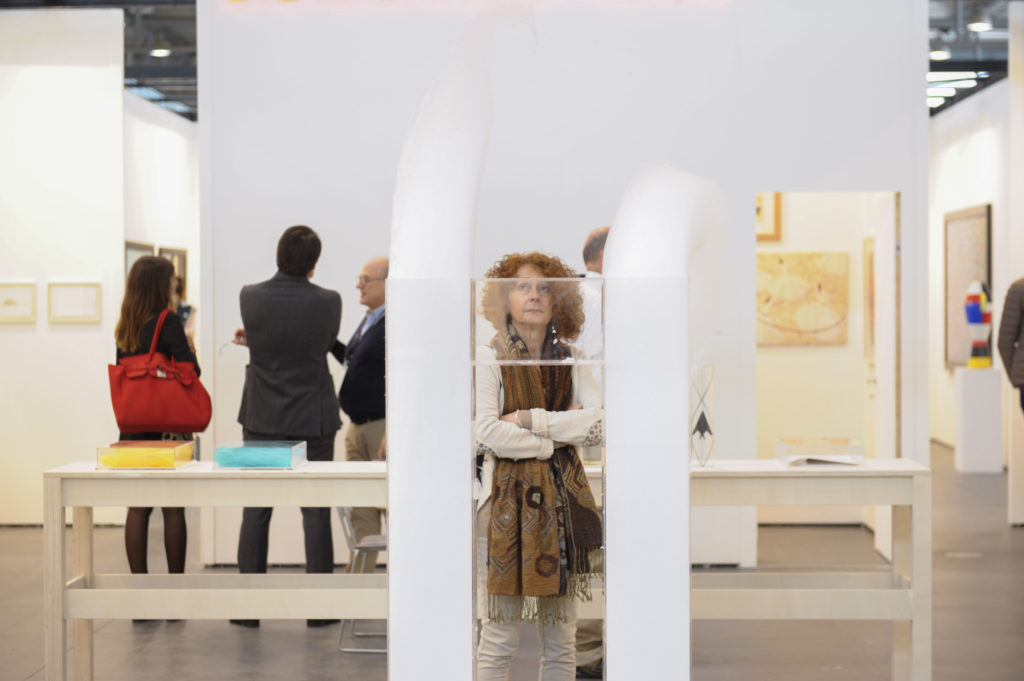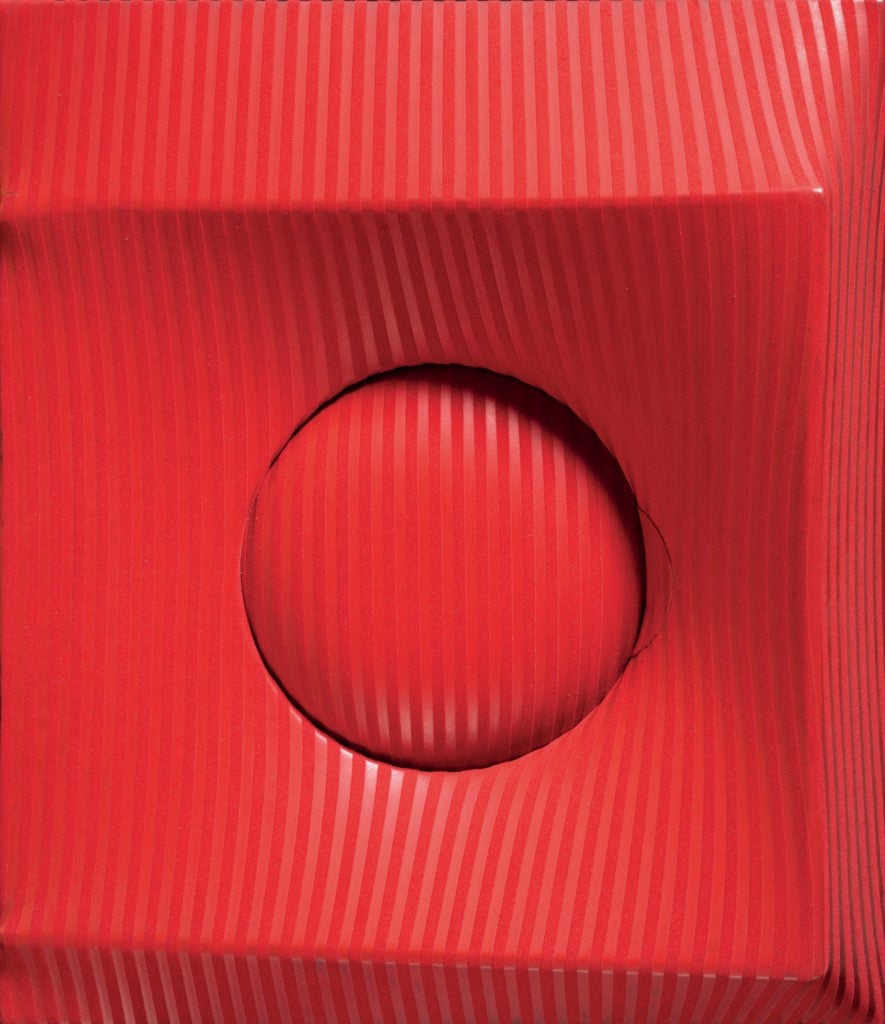Art Fairs
Art Verona Hits on a Fair Formula but Fails to Get Big Sales
Fair attendance was down but was it the weather or something deeper?

Fair attendance was down but was it the weather or something deeper?

Amah-Rose Abrams

Verona is a stunning beautiful medieval city in Northern Italy—ironically made famous by Shakespeare’s Romeo and Juliet, although he never visited the city—nestled in a corner of the country that is home to around 65 percent of all Italian collectors, who live between Milan, Verona, Turin, and Bologna.
All of these cities have strong art fairs with an international presence such as Miart, Artissima, and Art Bologna. Art Verona, now in its eleventh edition, is looking to put itself on the map through tapping into the rich resource of local collectors, and expanding their range of exhibitors.
Split into two halves, one side showing contemporary works and the other showing modern and historical works, the fair, in terms of collectors present, galleries, and works on sale is mainly Italian-focused.
On the contemporary side—which was host to Galleria Piu and Maurizio Caldirola Arte Contemporanea among others—there are many initiatives to encourage the sale of new and emerging artists through acquisition programs. One such example is the Domas Foundation and the RAW section, which shows work by emerging artists represented by young galleries free of charge.
According to Veronese collector Giorgio Fasol, the fair has gone through massive changes in the last two years. A key member of the art world in Italy and member of the committee at Art Verona, Fasol has a private collection of mainly old master works that includes early purchases by Maurizio Cattelan, Susan Philipsz, Tino Sehgal, and Jim Lambie and is the founder member of the foundation Di Bene il Meglio made up of ten local collectors (which roughly translates as “good becomes better”).
The foundation only buys emerging artists, and has acquired twelve works at the fair, including one from the contemporary section.

Gallerists and collectors alike praised the fair. Photo courtesy Art Verona
“In the last two years there has been a great increase in terms of quality at the fair, in terms of the design of the fair itself to the presence of new and important galleries,” Fasol told artnet News.
Fasol also spoke of how he would like to see the fair become increasingly international, stating that it is fundamental to the success of any fair in today’s global market and a terrible time economically in Italy, although he praised this edition and fair as the best yet.
The work at the fair is highly curated, with every piece on view approved or selected by artistic director Andrea Bruciati, who joined the fair three years ago. Bruciati is highly passionate about not only building Art Verona’s profile on a regional level but also guiding the fair towards a stage where it would attract a more international crowd on all levels.
“I want to propose a new type of art fair. I wanted to produce something that was focused on the Italian system,” Bruciati explained to artnet News. “I think there are so many interesting artists in Italy at the moment. There is high quality but the Italian system doesn’t support Italian artists.”
This seems to be changing. Since he’s been with Art Verona, Bruciati has seen the majority of collectors coming to the fair moving to a 60/40 split.
“I don’t want to be Frieze or Art Basel, I want to create something that is the right mix of art and culture,” Bruciati continued, going on to explained how he wanted to use Verona’s high profile as a tourist destination to draw people to the city for the fair.
Every single gallerist spoken to at the fair praised both the fair’s organization and the level of presentation, except for galleries that brought works in the higher price ranges. Mostly among galleries presenting Modern works, sales were “disappointing.”
Italian galleries with a strong international presence such as Tornabuoni and Mazzoleni have been with the fair from day one. Despite exhibiting globally at fairs such as Frieze Masters, The Armory Show, and FIAC, they come to Verona both to represent at the fair but also to meet collectors in this part of Italy whom they otherwise wouldn’t.
Mazzoleni of Turin and London said they had sold above expectation, selling works by Agostino Bonalumi, Gianfranco Zappettini, Emilio Vedova, and Giuseppe Capogrossi.

Agostino Bonalumi, Rosso (1968). Photo courtesy Mazzoleni.
Tornabuoni, another Italian gallery with a London base and high international profile, implied they had done less well but were also in the region to acquire works. There was much discussion as to the cause but many thought that the lovely weather after a week of rain meant that collectors would rather be outside on the lake than inside a conference center attending an art fair, no matter how pleasant.
Most galleries that had sold at the time of writing had sold items priced at the lower end of the spectrum. De Primi Fine Art, the sister of Repetto Gallery in London, sold a work by Bruno Munari, Negativo Positivo 11 (1950-90) for €15,000, and another for €30,000. Galleria Spazia also sold a work on paper by Fausto Melotti for below €10,000, a work by Franco Grignani for between €10,000 and €25,000 and another work by Toni Costa, Dinamica Visuale, for between €20,000- €30,000. The dealers were happy for the moment but were hoping for further sales later in the day to round off the fair.
However, on the flipside, Spirale from Milano a sold a painting by Franco Angeli for €100,000 and another by Giosetta Fioroni for €70,000 from a selection of works by Mario Schifano, Paolo Scheggi, and Enrico Castellani all of whom were widely exhibited at the fair.
The fair and the surrounding events—which included a live performance of a symphony by the Austrian artist Hermann Nitsch composed as an ode to the city of Verona—were a great success in terms of atmosphere, and the quality of the majority of the works was very high. But low attendance compared to last year meant that sales were slow.
For next year, those involved in the fair are looking to improve on this year’s edition in terms of organization and sales, and importantly, attendance. But in the same breath, who wouldn’t want to come back to Verona?